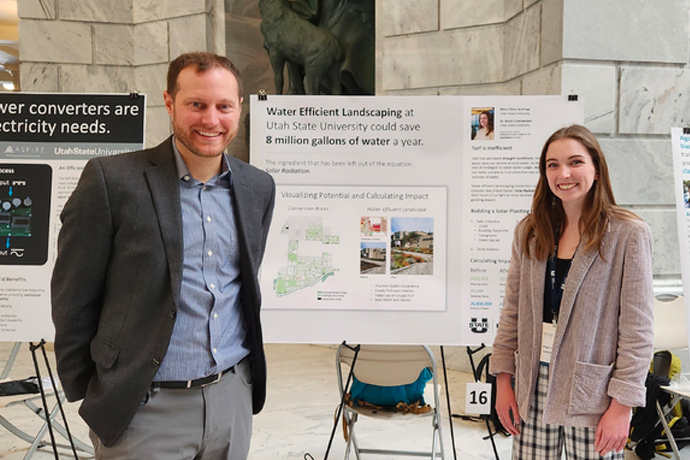Sustainable Solutions: Student Identifies Ways to Save 8 Million Gallons of Water a Year at USU
By Madison McGrath | January 22, 2024


Utah's population growth has made it imperative to address the consequences of drought and the detrimental effects it brings to the Great Salt Lake. A 2022 report from USU's Janet Quinney Lawson Institute for Land, Water, and Air identified water supply as the top concern for Utah residents. The state is experiencing a significant shift in landscaping preferences, moving away from the traditional European-inspired lawn aesthetic. This shift is driven by a growing number of policies related to water rights conservation.
Mary Claire Jennings, a student in the Landscape Architecture and Environmental Planning Department at USU, is passionate about water conservation and points out that “grass lawns are especially vulnerable to overwatering and damage.”
Utah State University's Logan Campus has a substantial expanse of non-native grass that requires a significant water supply for maintenance. Jennings said that as the state’s land-grant university, USU has a unique opportunity to lead the transition to water-efficient landscaping. Jennings is involved in research, mentored by Associate Professor Brent Chamberlain, and was selected to be one of the 26 USU students who presented their work at Research on Capitol Hill.
“I ran a solar radiation analysis to identify areas of grass on campus that require more water to stay green,” Jennings explained. “I layered this information with areas of grass that are unused, such as park strips, to spatially identify where we could save water if we replaced the grass with native, low-water plants. This map allowed me to calculate potential water savings and my estimates show that we could save 8.5 million gallons of water every year with these conversions. Nothing on Old Main Hill or the Quad was even changed! Promoting water-wise planting is a crucial and efficient approach to mitigate the challenges posed by drought in Utah.”
Jennings said attending Research on Capitol Hill was an incredible opportunity and a way to educate people about sustainable landscaping practices and what is the most efficient use of water.
“I was able to talk to representatives who have worked on bills that incentivize water-efficient landscaping conversions, as well as someone from the Jordan River Valley Water Conservancy District. These conversations inspired me to continue this research, and reminded me that when we come together, we can identify and actualize more solutions.”